Scenery of old town of Corfu, Greece
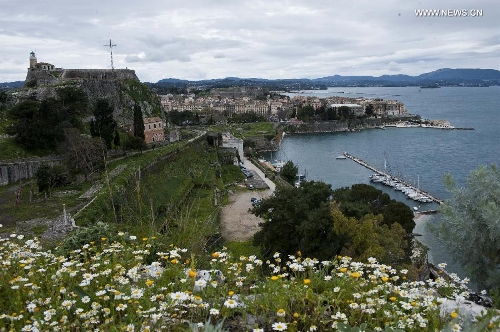
Photo taken on March 8, 2014 shows a scenery of the old town of Corfu, Greece. The Old Town of Corfu, on the Greek Island of Corfu off the western coasts of Albania and Greece, is located in a strategic position at the entrance of the Adriatic Sea, and has its roots in the 8th century BC. The three forts of the town, designed by renowned Venetian engineers, were used from 1386 to 1797 by Venice to defend the maritime trading interests of the Republic of Venice against the Ottoman Empire. In the course of time, the forts were repaired and partly rebuilt several times, more recently under British rule in the 19th century. The mainly neoclassical housing stock of the Old Town is partly from the Venetian period, partly of later construction, notably the 19th century. As a fortified Mediterranean port, Corfu' s urban and port ensemble is notable for its high level of integrity and authenticity. The ensemble was inscribed as UNESCO World Heritage Site in 2007. It is the most recent inscribed among the 17 UNESCO World Heritage Sites in Greece. (Xinhua/Liu Yongqiu)
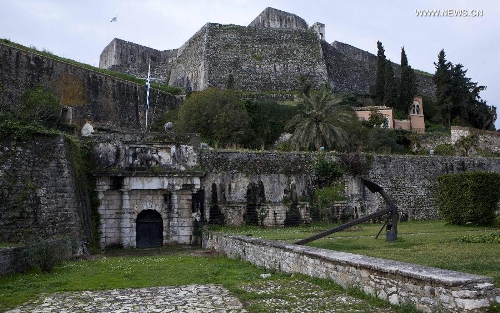
Photo taken on March 8, 2014 shows a scenery of the old town of Corfu, Greece. The Old Town of Corfu, on the Greek Island of Corfu off the western coasts of Albania and Greece, is located in a strategic position at the entrance of the Adriatic Sea, and has its roots in the 8th century BC. The three forts of the town, designed by renowned Venetian engineers, were used from 1386 to 1797 by Venice to defend the maritime trading interests of the Republic of Venice against the Ottoman Empire. In the course of time, the forts were repaired and partly rebuilt several times, more recently under British rule in the 19th century. The mainly neoclassical housing stock of the Old Town is partly from the Venetian period, partly of later construction, notably the 19th century. As a fortified Mediterranean port, Corfu' s urban and port ensemble is notable for its high level of integrity and authenticity. The ensemble was inscribed as UNESCO World Heritage Site in 2007. It is the most recent inscribed among the 17 UNESCO World Heritage Sites in Greece. (Xinhua/Liu Yongqiu)
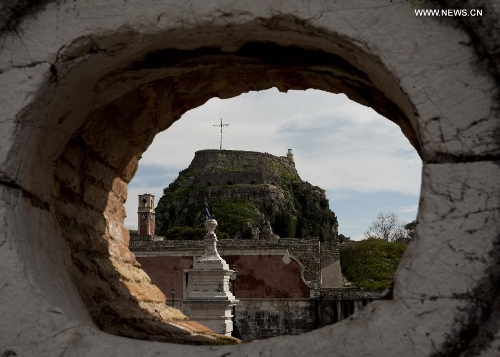
Photo taken on March 8, 2014 shows a scenery of the old town of Corfu, Greece. The Old Town of Corfu, on the Greek Island of Corfu off the western coasts of Albania and Greece, is located in a strategic position at the entrance of the Adriatic Sea, and has its roots in the 8th century BC. The three forts of the town, designed by renowned Venetian engineers, were used from 1386 to 1797 by Venice to defend the maritime trading interests of the Republic of Venice against the Ottoman Empire. In the course of time, the forts were repaired and partly rebuilt several times, more recently under British rule in the 19th century. The mainly neoclassical housing stock of the Old Town is partly from the Venetian period, partly of later construction, notably the 19th century. As a fortified Mediterranean port, Corfu' s urban and port ensemble is notable for its high level of integrity and authenticity. The ensemble was inscribed as UNESCO World Heritage Site in 2007. It is the most recent inscribed among the 17 UNESCO World Heritage Sites in Greece. (Xinhua/Liu Yongqiu)
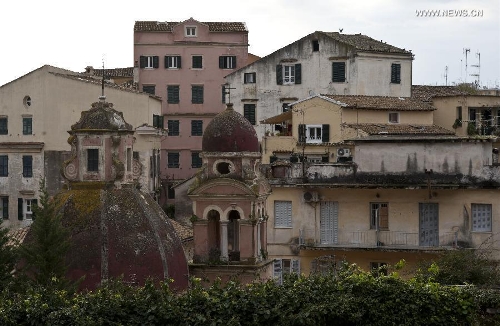
Photo taken on March 8, 2014 shows a scenery of the old town of Corfu, Greece. The Old Town of Corfu, on the Greek Island of Corfu off the western coasts of Albania and Greece, is located in a strategic position at the entrance of the Adriatic Sea, and has its roots in the 8th century BC. The three forts of the town, designed by renowned Venetian engineers, were used from 1386 to 1797 by Venice to defend the maritime trading interests of the Republic of Venice against the Ottoman Empire. In the course of time, the forts were repaired and partly rebuilt several times, more recently under British rule in the 19th century. The mainly neoclassical housing stock of the Old Town is partly from the Venetian period, partly of later construction, notably the 19th century. As a fortified Mediterranean port, Corfu' s urban and port ensemble is notable for its high level of integrity and authenticity. The ensemble was inscribed as UNESCO World Heritage Site in 2007. It is the most recent inscribed among the 17 UNESCO World Heritage Sites in Greece. (Xinhua/Liu Yongqiu)
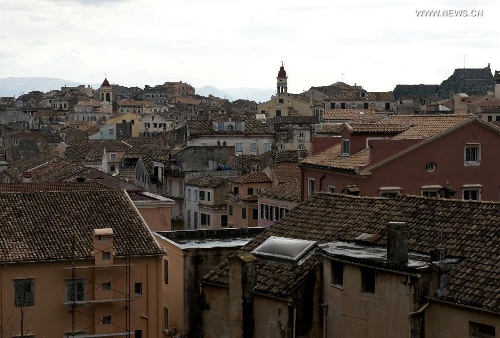
Photo taken on March 8, 2014 shows a scenery of the old town of Corfu, Greece. The Old Town of Corfu, on the Greek Island of Corfu off the western coasts of Albania and Greece, is located in a strategic position at the entrance of the Adriatic Sea, and has its roots in the 8th century BC. The three forts of the town, designed by renowned Venetian engineers, were used from 1386 to 1797 by Venice to defend the maritime trading interests of the Republic of Venice against the Ottoman Empire. In the course of time, the forts were repaired and partly rebuilt several times, more recently under British rule in the 19th century. The mainly neoclassical housing stock of the Old Town is partly from the Venetian period, partly of later construction, notably the 19th century. As a fortified Mediterranean port, Corfu' s urban and port ensemble is notable for its high level of integrity and authenticity. The ensemble was inscribed as UNESCO World Heritage Site in 2007. It is the most recent inscribed among the 17 UNESCO World Heritage Sites in Greece. (Xinhua/Liu Yongqiu)
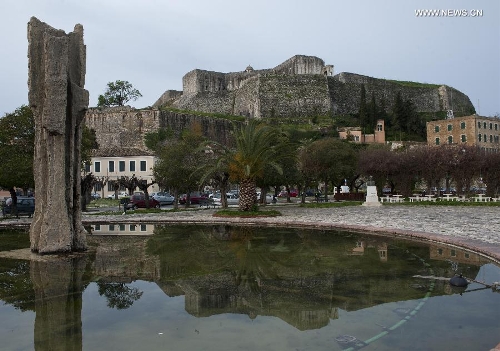
Photo taken on March 8, 2014 shows a scenery of the old town of Corfu, Greece. The Old Town of Corfu, on the Greek Island of Corfu off the western coasts of Albania and Greece, is located in a strategic position at the entrance of the Adriatic Sea, and has its roots in the 8th century BC. The three forts of the town, designed by renowned Venetian engineers, were used from 1386 to 1797 by Venice to defend the maritime trading interests of the Republic of Venice against the Ottoman Empire. In the course of time, the forts were repaired and partly rebuilt several times, more recently under British rule in the 19th century. The mainly neoclassical housing stock of the Old Town is partly from the Venetian period, partly of later construction, notably the 19th century. As a fortified Mediterranean port, Corfu' s urban and port ensemble is notable for its high level of integrity and authenticity. The ensemble was inscribed as UNESCO World Heritage Site in 2007. It is the most recent inscribed among the 17 UNESCO World Heritage Sites in Greece. (Xinhua/Liu Yongqiu)
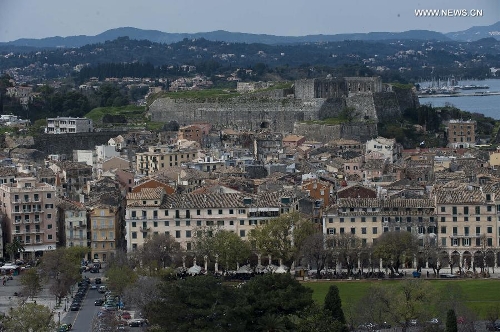
Photo taken on March 8, 2014 shows a scenery of the old town of Corfu, Greece. The Old Town of Corfu, on the Greek Island of Corfu off the western coasts of Albania and Greece, is located in a strategic position at the entrance of the Adriatic Sea, and has its roots in the 8th century BC. The three forts of the town, designed by renowned Venetian engineers, were used from 1386 to 1797 by Venice to defend the maritime trading interests of the Republic of Venice against the Ottoman Empire. In the course of time, the forts were repaired and partly rebuilt several times, more recently under British rule in the 19th century. The mainly neoclassical housing stock of the Old Town is partly from the Venetian period, partly of later construction, notably the 19th century. As a fortified Mediterranean port, Corfu' s urban and port ensemble is notable for its high level of integrity and authenticity. The ensemble was inscribed as UNESCO World Heritage Site in 2007. It is the most recent inscribed among the 17 UNESCO World Heritage Sites in Greece. (Xinhua/Liu Yongqiu)
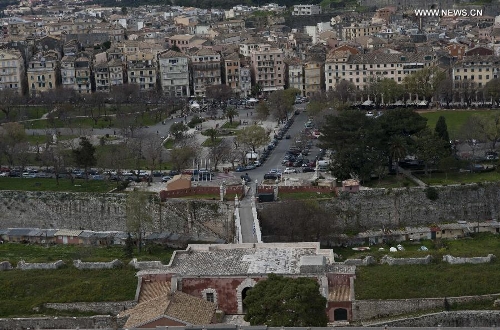
Photo taken on March 8, 2014 shows a scenery of the old town of Corfu, Greece. The Old Town of Corfu, on the Greek Island of Corfu off the western coasts of Albania and Greece, is located in a strategic position at the entrance of the Adriatic Sea, and has its roots in the 8th century BC. The three forts of the town, designed by renowned Venetian engineers, were used from 1386 to 1797 by Venice to defend the maritime trading interests of the Republic of Venice against the Ottoman Empire. In the course of time, the forts were repaired and partly rebuilt several times, more recently under British rule in the 19th century. The mainly neoclassical housing stock of the Old Town is partly from the Venetian period, partly of later construction, notably the 19th century. As a fortified Mediterranean port, Corfu' s urban and port ensemble is notable for its high level of integrity and authenticity. The ensemble was inscribed as UNESCO World Heritage Site in 2007. It is the most recent inscribed among the 17 UNESCO World Heritage Sites in Greece. (Xinhua/Liu Yongqiu)
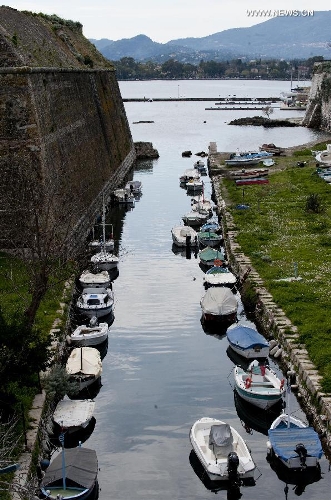
Photo taken on March 8, 2014 shows a scenery of the old town of Corfu, Greece. The Old Town of Corfu, on the Greek Island of Corfu off the western coasts of Albania and Greece, is located in a strategic position at the entrance of the Adriatic Sea, and has its roots in the 8th century BC. The three forts of the town, designed by renowned Venetian engineers, were used from 1386 to 1797 by Venice to defend the maritime trading interests of the Republic of Venice against the Ottoman Empire. In the course of time, the forts were repaired and partly rebuilt several times, more recently under British rule in the 19th century. The mainly neoclassical housing stock of the Old Town is partly from the Venetian period, partly of later construction, notably the 19th century. As a fortified Mediterranean port, Corfu' s urban and port ensemble is notable for its high level of integrity and authenticity. The ensemble was inscribed as UNESCO World Heritage Site in 2007. It is the most recent inscribed among the 17 UNESCO World Heritage Sites in Greece. (Xinhua/Liu Yongqiu)
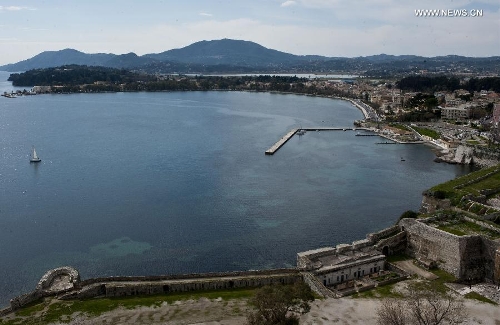
Photo taken on March 8, 2014 shows a scenery of the old town of Corfu, Greece. The Old Town of Corfu, on the Greek Island of Corfu off the western coasts of Albania and Greece, is located in a strategic position at the entrance of the Adriatic Sea, and has its roots in the 8th century BC. The three forts of the town, designed by renowned Venetian engineers, were used from 1386 to 1797 by Venice to defend the maritime trading interests of the Republic of Venice against the Ottoman Empire. In the course of time, the forts were repaired and partly rebuilt several times, more recently under British rule in the 19th century. The mainly neoclassical housing stock of the Old Town is partly from the Venetian period, partly of later construction, notably the 19th century. As a fortified Mediterranean port, Corfu' s urban and port ensemble is notable for its high level of integrity and authenticity. The ensemble was inscribed as UNESCO World Heritage Site in 2007. It is the most recent inscribed among the 17 UNESCO World Heritage Sites in Greece. (Xinhua/Liu Yongqiu)
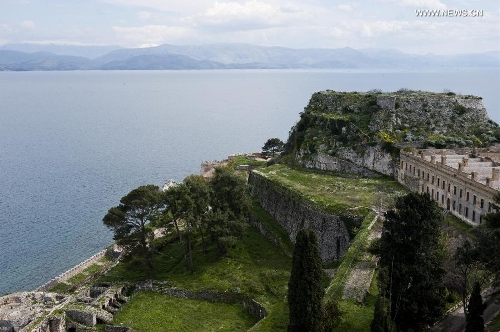
Photo taken on March 8, 2014 shows a scenery of the old town of Corfu, Greece. The Old Town of Corfu, on the Greek Island of Corfu off the western coasts of Albania and Greece, is located in a strategic position at the entrance of the Adriatic Sea, and has its roots in the 8th century BC. The three forts of the town, designed by renowned Venetian engineers, were used from 1386 to 1797 by Venice to defend the maritime trading interests of the Republic of Venice against the Ottoman Empire. In the course of time, the forts were repaired and partly rebuilt several times, more recently under British rule in the 19th century. The mainly neoclassical housing stock of the Old Town is partly from the Venetian period, partly of later construction, notably the 19th century. As a fortified Mediterranean port, Corfu' s urban and port ensemble is notable for its high level of integrity and authenticity. The ensemble was inscribed as UNESCO World Heritage Site in 2007. It is the most recent inscribed among the 17 UNESCO World Heritage Sites in Greece. (Xinhua/Liu Yongqiu)